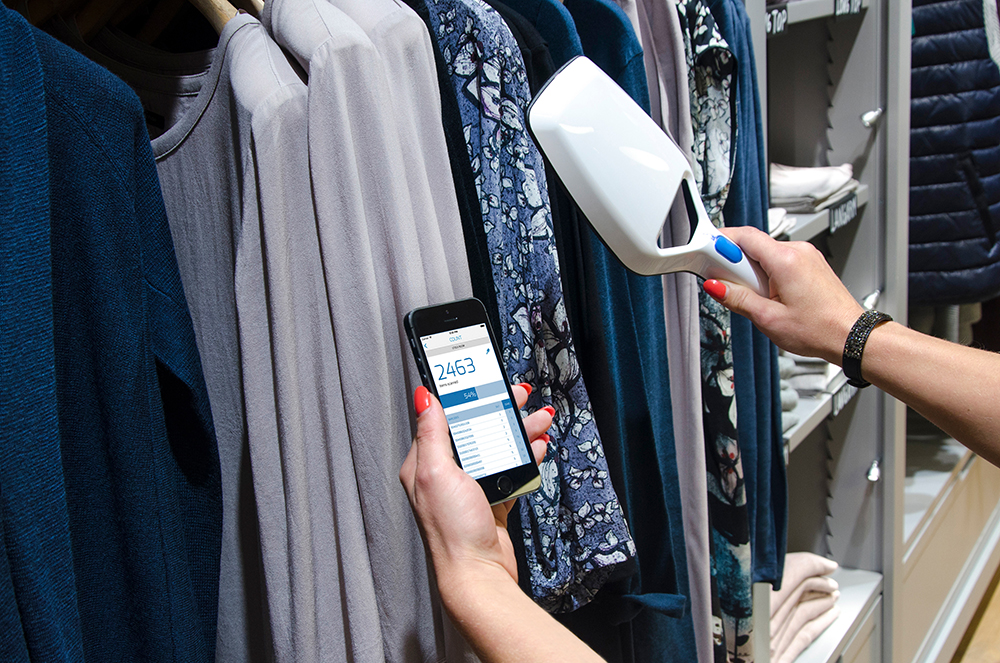What benefits would RFID offer my retail business?

RFID has been a buzzword in retail over recent years, but for many operators the investment in new technology and tracking begs one simple question: What benefits would RFID offer my business?
Here’s a quick guide to RFID, how it works, what it offers, and how you go about making this technology work for you.
What is RFID?
Radio Frequency Identification involves small chips that can collect and store data.
In retail it’s used in conjunction with apparel or product tagging, providing immediate insight into the location of an item. Tags can be applied during manufacture so items can be tracked throughout the entire chain.
RFID tags have readers to decipher the information they contain, but unlike barcodes an RFID tag can be recognised from a distance or even when embedded in an object, allowing for greater accuracy in stock monitoring and security.
What’s the difference between RF and RFID?
Although they sound alike, RF and RFID are vastly different. RF refers to radio frequency and in retail relates to an electronic article surveillance system and tags or labels that work on a swept frequency.
RF tags and labels simply answer the call of an RF antenna, whereas RFID has the potential to reveal vast amounts of information about a product that is contained in its chip like product type, colour, size, date of manufacture, shipping date, exact location and more.
What’s so great about RFID anyway?
The ability of RFID to carry such detailed information allows it to be used for a host of purposes that improve store efficiency and also the consumer experience. Such as:
Stock tracking – When applied at the point of manufacture or distribution, RFID allows retailers to track items throughout the entire supply, distribution and sales chain. This helps minimise stock loss from the outset, right through to the sales floor.
Inventory accuracy – One of the most compelling arguments for RFID lies in the efficiency it offers in inventory tracking. Statistics indicate RFID allows inventory accuracy to increase from 65% to 95%.
Meanwhile, it provides up-to-the minute information and dramatically shortens the time spent stocktaking. Where manual counts allow for 250 items per hour, RFID can cycle count inventory at a rate of 18,000 items per hour.
RFID can also enable streamlined processes like automatic reordering when stock levels fall too low.
Unique identification – The third advantage of RFID that’s now being embraced by retailers is its ability to improve the customer service experience courtesy of the unique identification features and information contained within each chip.
Cutting-edge retailers are experimenting with a whole host of features and add-ons that enable consumers and sales staff to use RFID to quickly ascertain whether an item is available in another colour, in another size, at another outlet, when it will arrive in-store and more.
The technology is being applied to everything from smart mirrors to virtual sales assistants, and with its ability to detect items within a vast area, some predict it may do away with the checkout all together.
Who uses RFID?
RFID is becoming a technology of choice for major retailers. In the US, Macy’s will have rolled out RFID right across its stores by the end of this year, and they’re not the only ones rapidly implementing the technology.
According to a Kurt Salmon RFID in Retail Study 2016 which interviewed retailers in the US and Europe, research showed 73% of retailers had implemented or were currently implementing or piloting RFID. That number had nearly doubled from 2014.
They note: “Those who are using RFID are seeing significant improvements in inventory accuracy and reductions in out-of-stocks, cost of goods sold and other areas essential to staying competitive.
“RFID continues to be a critical tool for both omnichannel and customer engagement initiatives that are central to a retailer’s future success.”
Can I upgrade my EAS system to RFID?
In some cases, yes. RF systems can potentially be upgraded to RFID as the technology works well side-by-side.
Whether or not RFID is right for you depends on what you’re seeking to achieve, but the potential efficiency it offers retailers, along with the consumer benefits are seen as definite assets in an ever-changing retail game.